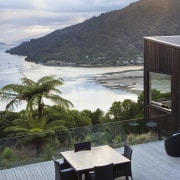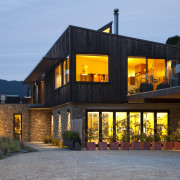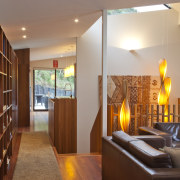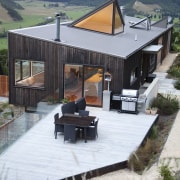Far sighted
Optimising the outlook while not detracting from the landscape is a design priority when you have breathtaking views to enjoy
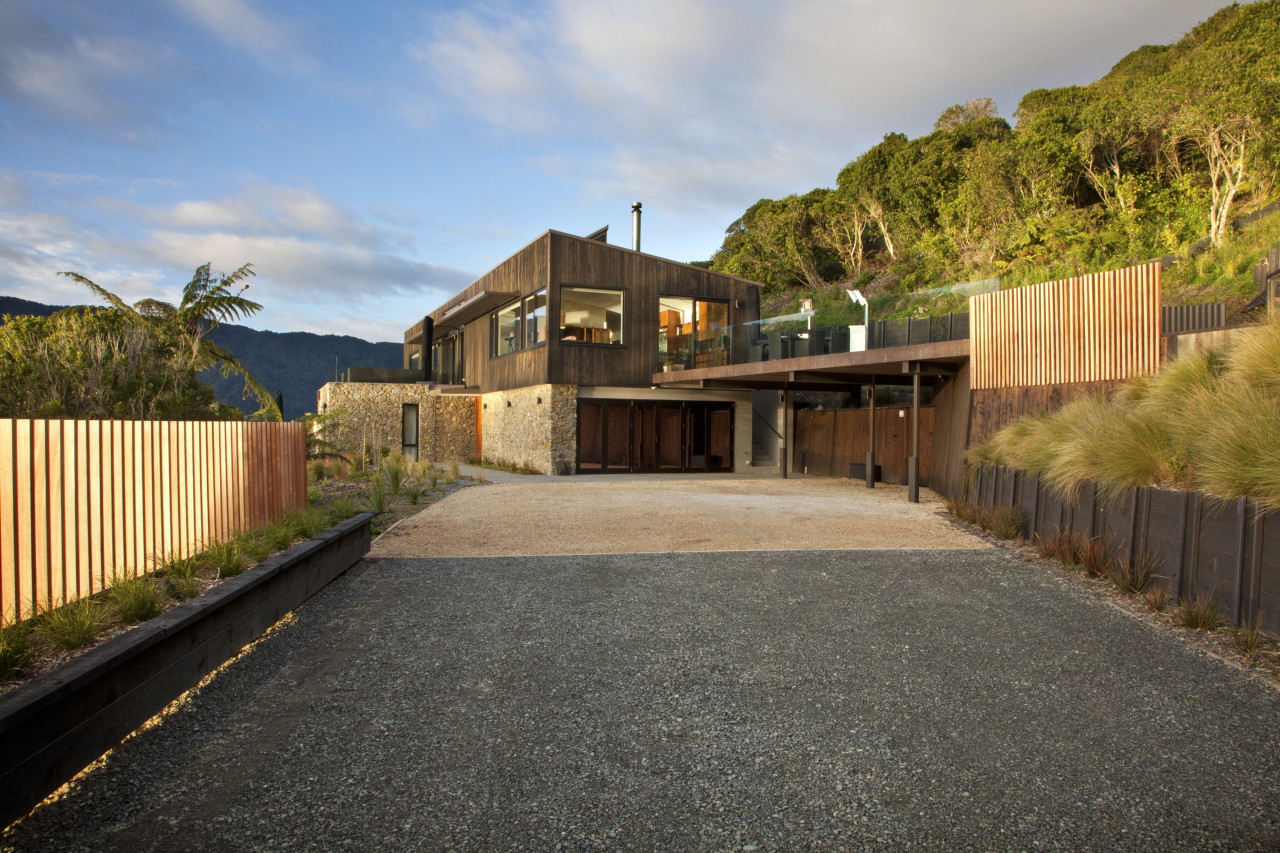
When you have the opportunity to build a house in one of the most pristine parts of the country, you want to ensure every aspect of the view is maximised. However it's also important for the architecture to be respectful of the neighbours and the surrounding landscape.
This two-level house, by Sharon Jansen and Hugh Tennent of architecture firm Tennent + Brown, is situated on the side of a steep hill with panoramic views down the full length of Queen Charlotte Sound. The English owners wanted the view to be the main focus of the house as this is what had attracted them to the site.
Other considerations that had an impact on the design included strict resource consent conditions. These dictated the house maintain a low presence on the landscape and this helped drive the aesthetic, says Tennent.
"The initial plan was for a much larger three-storey house, with three segments spread across the site. This was revised and scaled back into a more compact unit in response to a change in the client brief. We were working with a very restricted building area so the design needed to have a tight footprint.
"Essentially, our final strategy was to create a simple, rectilinear house that was recessed into the hill as a way to minimise its impact on the landscape and maximise the view from each room."

Tennent + Brown's choice of materials was equally appropriate to the unspoiled environment. The house is grounded against the hill with a natural stone-clad base of local Pukaka schist. A cedar second storey also helps it blend into the bush background.
"A lot of other houses in the area look directly at this hill, so we wanted something that would recess into the bush. The material palette of timber and stone made it very easy for us to integrate the house into the landscape," says the architect.
Extensive retaining walls were required to stabilise the hill and serve to form outdoor living terraces to the north.
"Because we were working with a tight footprint and a narrow site, the house really had to huddle back into the mountain to maximise the area in front of it for terracing.
"The position of the house and its ability to catch the sun were also factors in the design. It's an east-facing site, with a hill to its northwestern side, so the sun disappears quite early. The owners' brief was primarily for a family home that took advantage of the view but they also wanted the house to trap the sun."

In response to this, the design team devised a steeply pitched lantern, positioned over the entry and staircase void, which rises from the roofline to bring afternoon sun into the core of the house and down into the lower level.
Although originally designed to accommodate visiting family, the two ground-floor bedrooms and garage were converted into a self-contained luxury bed and breakfast amenity, which caters to international travellers.
"For this reason, interior materials and finishes were selected to complement the scenery. The owners wanted it to look like a house in New Zealand," Tennent says.
A warm palette of browns and reds work with the saligna wood floors and cedar detailing around the staircase. Pacific and New Zealand-made furniture and fabrics, such as the tapa-cloth lampshade and curtains in the downstairs unit, were used throughout.
Story by: Trendsideas
Home kitchen bathroom commercial design

